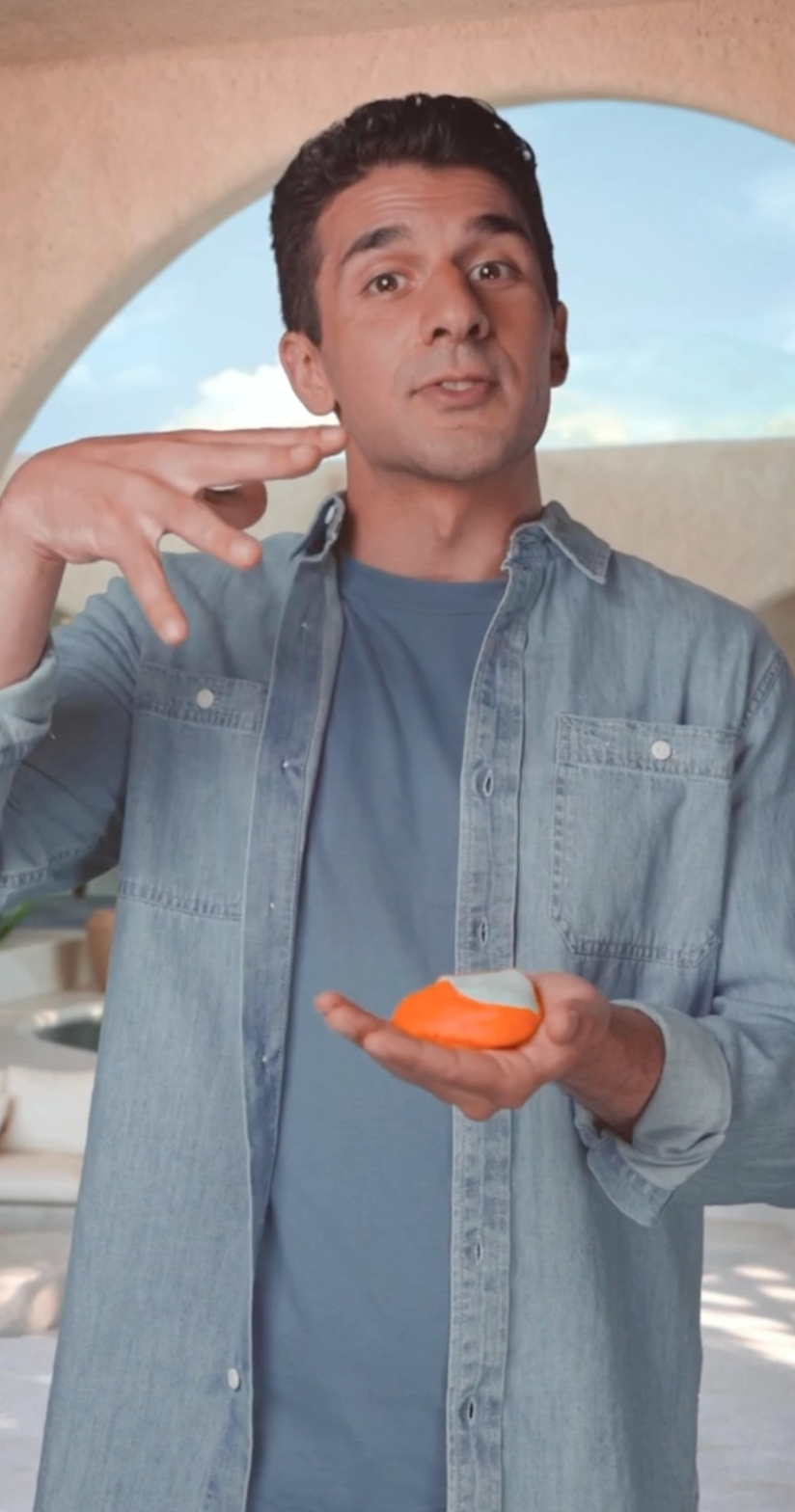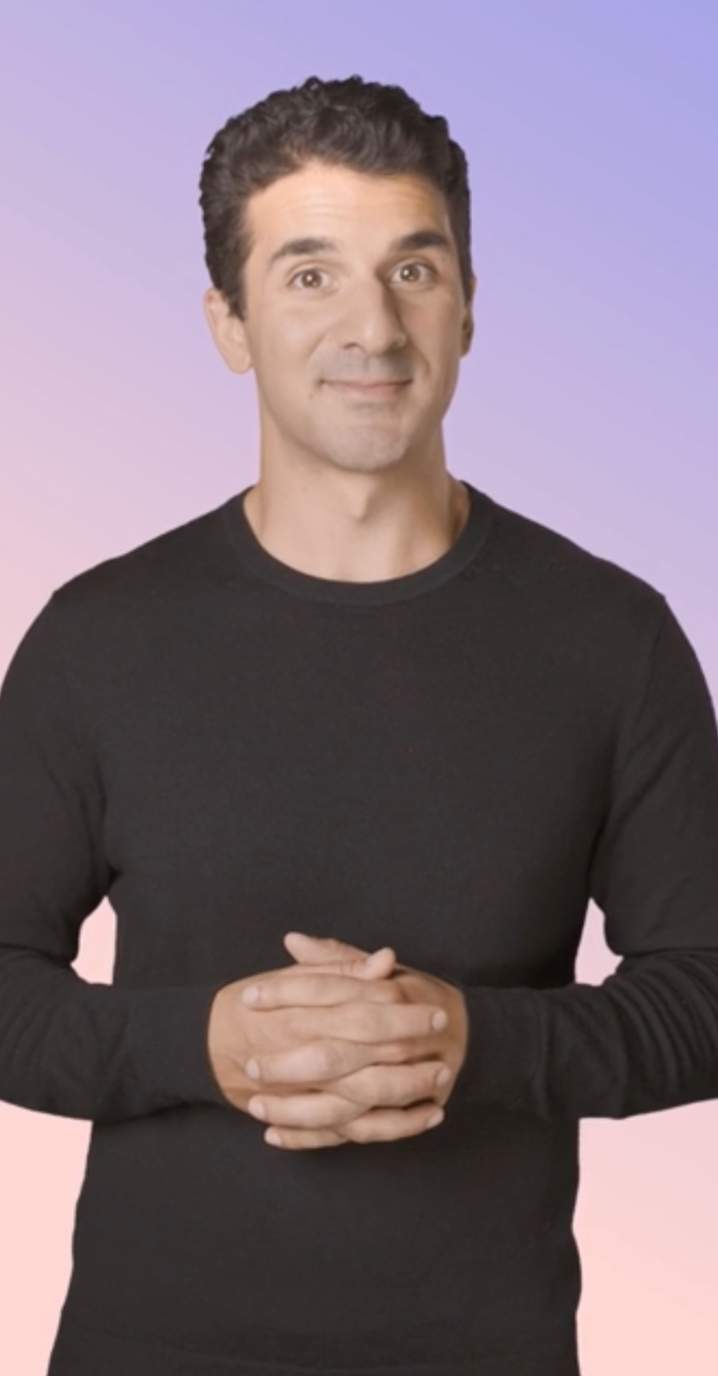Bloom
Bloom is the world’s first interactive video mental health app.
My role
Head of Writing
Client goal
Increase user retention
Outcome
User retention rose by over 30%
The process
My work at Bloom can be split into four areas: research, design, testing and iterating, and business as usual.
Research
I worked with a brilliant Head of User Research, and I learned a lot from her. Our primary research methods to understand user needs included:
usability studies,
diary studies,
interviews,
and in-app feedback.
The entire content team were involved in research, and I led user interviews and analysed data. I also did secondary research into mechanics which support users to continue their learning journey.
Design
The design stage involved:
collaborating with subject matter experts,
collaborating with the content team, marketing, and product folks,
asking ‘how might we’ questions,
scriptwriting,
defining the tone of voice,
prototyping,
and content modelling,
Testing and iteration
Testing and iterating happened throughout the design process.
Business as usual
My ‘business as usual’ activities included:
leading the writing team,
managing stakeholders,
writing microcopy, CRM emails, video scripts, and in-app notifications,
and editing the work of other writers.
On this page
I’m highlighting three aspects of my work:
I’m also sharing:
Voice guidelines
Maintaining a consistent voice across different channels is important for any brand. It helps build trust with users, and the right tone of voice can create memorable content. The process of defining and implementing the voice for Bloom involved:
research,
cross-department collaboration,
defining the voice,
and creating inclusive guidelines.
Led by research
Research showed that:
feeling a sense of connection during therapy is important,
and not all users connected with the same guide.
We began by having one guide on the app (Mike). We later added another guide (Shernita). Working with Mike and Shernita, we defined their:
personality traits,
interests,
and common phrases or wordings.
We created guidelines for each guide, and each scripts was tweaked to fit the language and personality of the individual guides.
Collaboration
Collaborating with stakeholders
Creating the guidelines was a process of co-creation. All stakeholders were invited to the kick-off meeting. I led writing workshops and made space for feedback. Stakeholders in the process included:
scriptwriters,
UX writers,
actors (who present the content on the app),
marketing folks,
and the CEO.
Collaborating when implementing the guidelines
Implementing the guidelines was also a process of collaboration. For example, developers sometimes added or edited copy which didn’t adhere to the tone guidelines. Speaking with the developers, I learned that their need was to be able to act quickly. The solution was to set up a new Slack channel. This meant:
developers shared screengrabs,
and writers prioritised responded quickly,
Defining the voice
The voice of Bloom is:
simple,
warm,
and honest.
Sure, it’s not the most unique description of a tone of voice. But that’s deliberate. Being a mental health app, we want to be about the users. It’s not about Bloom, it’s about our users. Choosing simple language makes it accessible. Warm language helps users feel welcome. Honesty builds a sense of connection.
Inclusive guidelines
The guidelines needed to be inclusive for two audiences:
users,
stakeholders at Bloom.
People on the team had different preferences. Some wanted the guidelines to be on Notion. Others wanted a printed version so they could keep it on their desk. Of course, we created both options.
The final guidelines included examples and ‘Do’s and Don’ts’ for every type of writing.
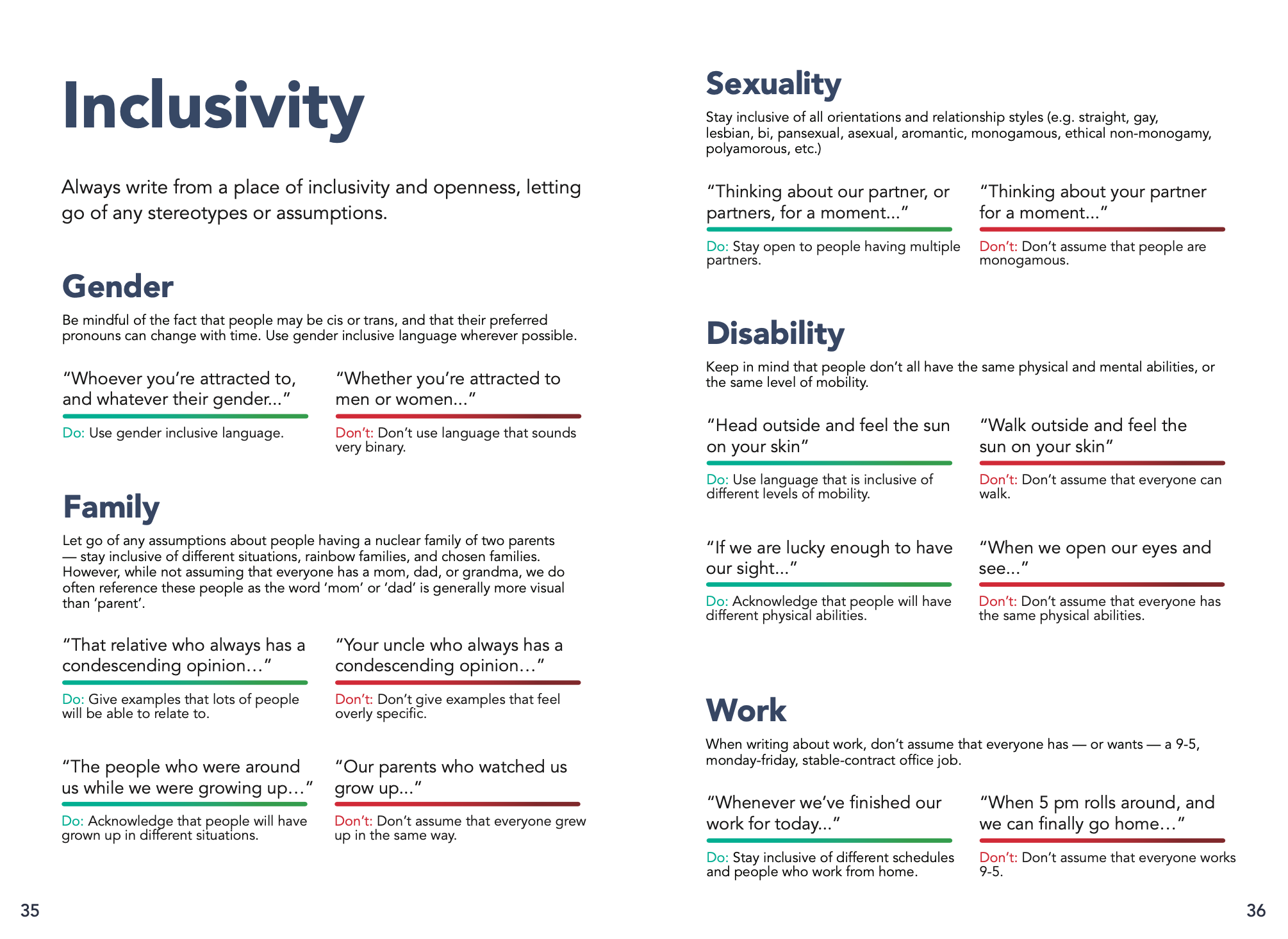
Guidelines for using inclusive language

Guidelines for writing headlines (microcopy)

Guidelines for writing for Mike

Guidelines for writing for Shernita

Guidelines for writing emails

Guidelines for writing notifications
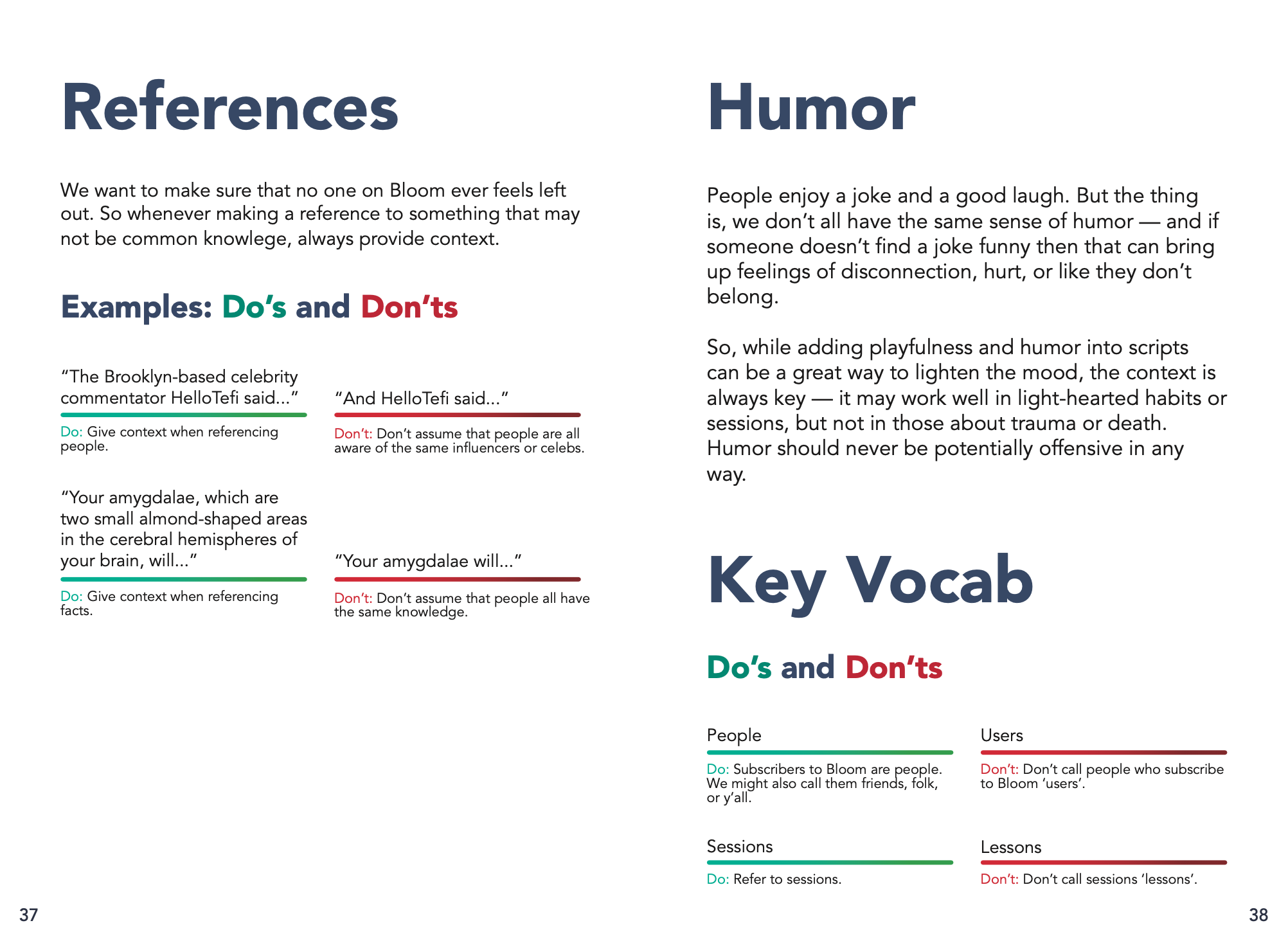
Guidelines for using references or humor
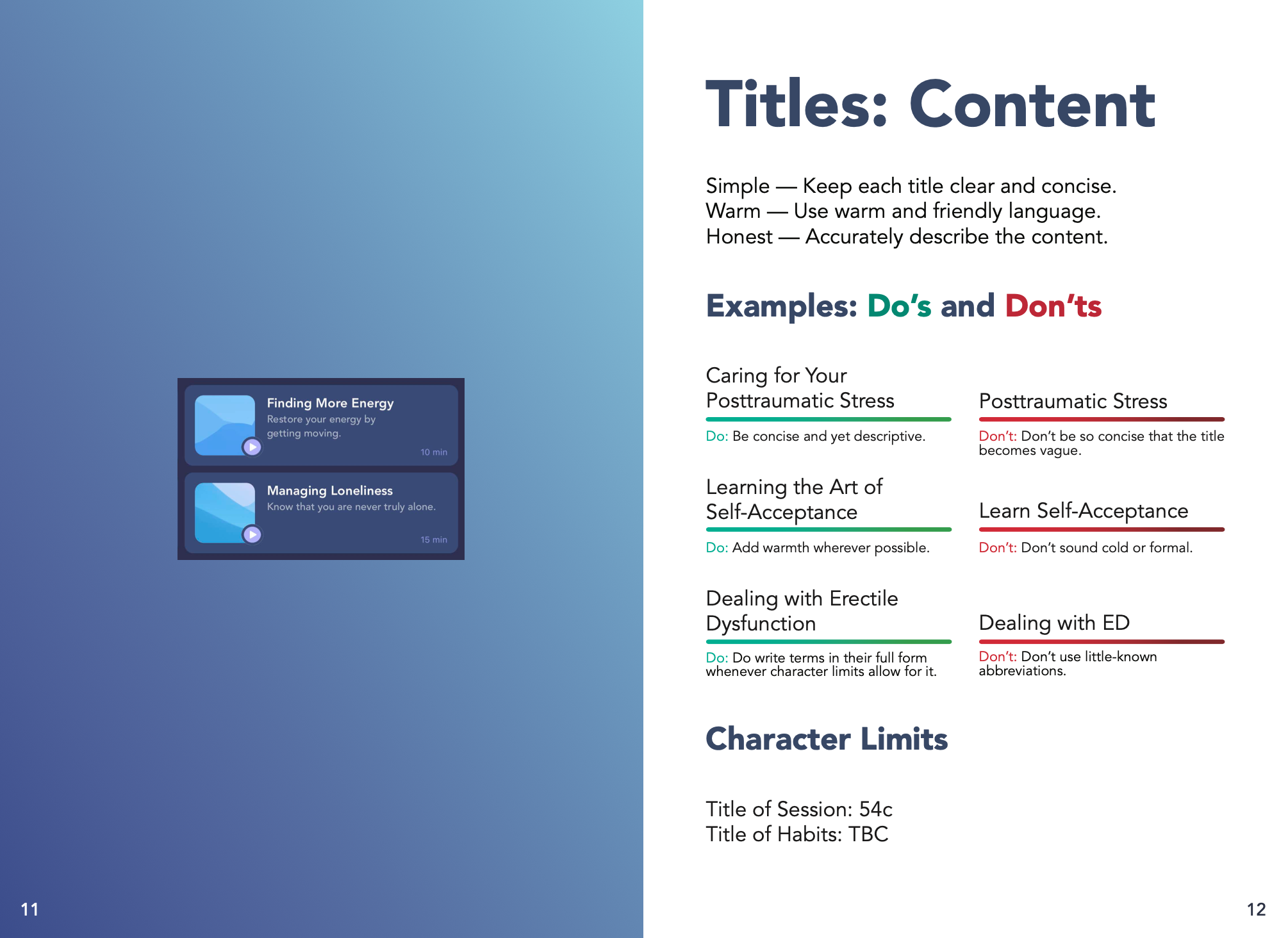
Guidelines for writing titles of content
Design
The goal was to increase user retention. My process involved:
research and data,
ideation,
design,
testing,
and iterating.
This process continued in a loop, with the content being tested and iterated multiple times.
Research and data
Research showed that if users wanted to improve their well-being, they needed to regularly practice the CBT skills they were learning on the app.
Data showed that anxiety was the most searched topic on the app.
Ideation
To support users to practice the CBT skills, we decided to create multi-day programs. (The only video content on the app when I joined Bloom was one-off sessions.)
Design
We created a multi-day program about general anxiety.
Minimum viable product
To test the concept of multi-day programs with users, we first created a minimum viable product by creating a program using content that already existed on the app. We tested this on the app to get an idea of whether users would actually do the program.
Testing
We tested the minimum viable product on the app to get an idea of whether users would actually do the program. It had a good response with users.
Iteration
Knowing that users were interested in doing multi-day programs, we wrote and filmed a program about general anxiety.
Research
We ran diary studies. Features that were informed by the research included:
breaking each ‘day’ into multiple short pieces of content,
accountability check-ins,
words of encouragement,
and trouble-shooting sessions.
Design
We created a series of six programs and launched them on the app.
Science, and especially neuroscience, can often feel somewhat bamboozling — but Bloom makes it all super simple.
Mike’s warm and friendly presence helps users feel at ease as they face — and overcome — their struggles.
Ideation
User research showed that people often only had a couple of minutes to spend on the app. So we also created short content that was less than a minute in length. Users could subscribe to various series and receive a new piece of content each day.
Content from the ‘Self-Care’ series.
Content from the ‘Morning Show’ series.
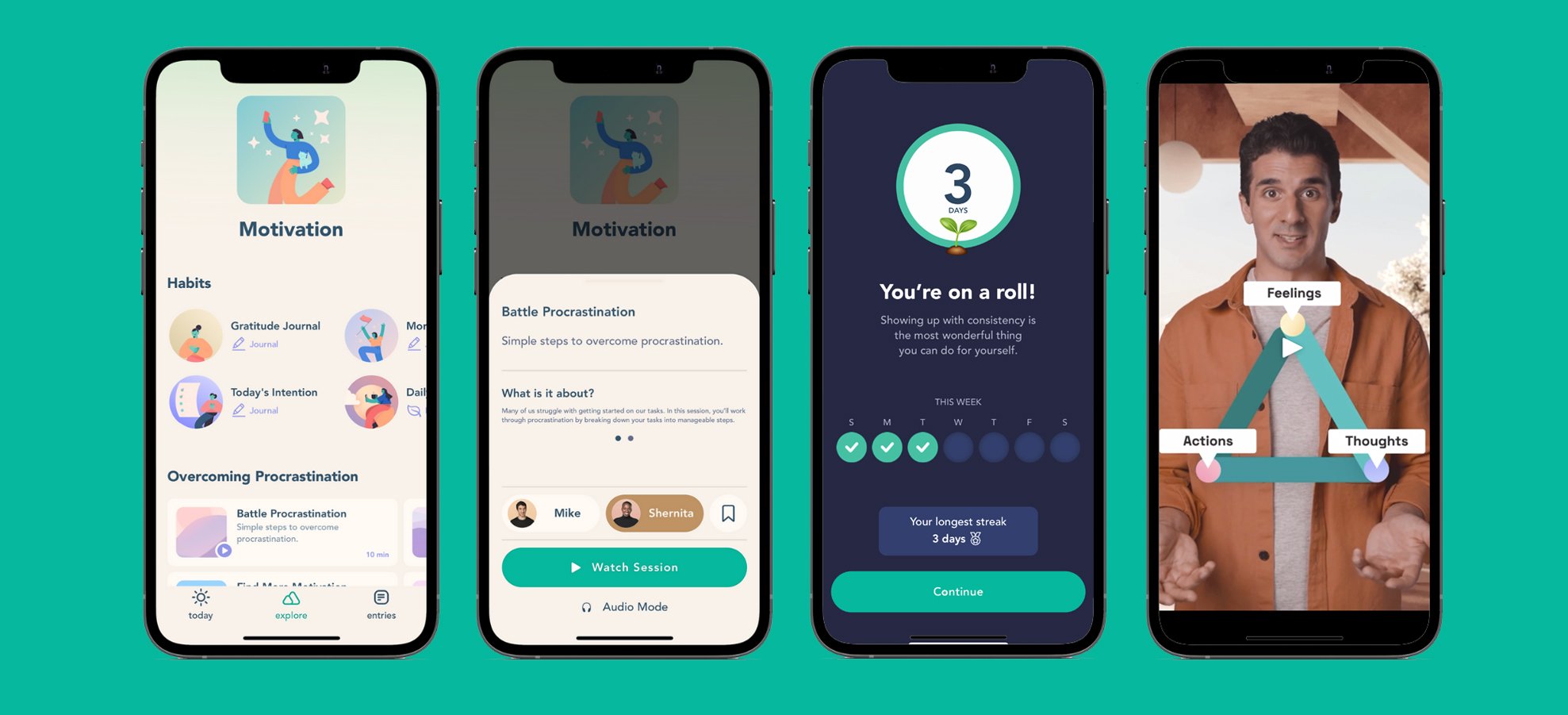
Frames from the Bloom app
Content modelling
When I first joined Bloom there was a single type of video content: one-off sessions. These sessions all followed the same structure with an intro, a CBT skill, and ending in a meditation.
It was good content.
It was useful.
And meaningful.
But there were issues. These issues included:
CBT skills had different names in different sessions,
encountering the same skill under a different name created confusion for users,
and filming each new session required a lot of time and resources.
I wanted to make the content clearer for users, and create a more efficient production process. To reach these goals, I did a content modelling project.
Classifying elements
I structured the video content into its component elements. Each piece of content had:
13 elements in total,
4 generic elements.
The generic elements could be used across multiple videos, which meant we only had to film it once.
Clearer content
I created a spreadsheet with all of the CBT skills, to give the team clarity about how many of the same skills had different names. Then, I assigned each of the CBT skills a single name.
Outcomes
We launched the multi-day programs and short content within the same period. User retention rose by over 30%.
Learnings
If I could go back in time and do one thing differently, I would have more clearly defined user needs and user stories. Having a bank of user needs and user stories would have helped the whole team stay focused on the same goals. It would have made us a more efficient team.
Other learnings include how to co-create a team which:
embraces difference,
celebrates playfulness and experimentation,
values user research,
and understands how defining the problem can lead to better solutions.
I also learned (or relearned!) the value of not rushing. And of listening to, and respecting, my intuition. Even when under time pressure, it’s always best to keep a clear head and stay focused on the overall goal.

